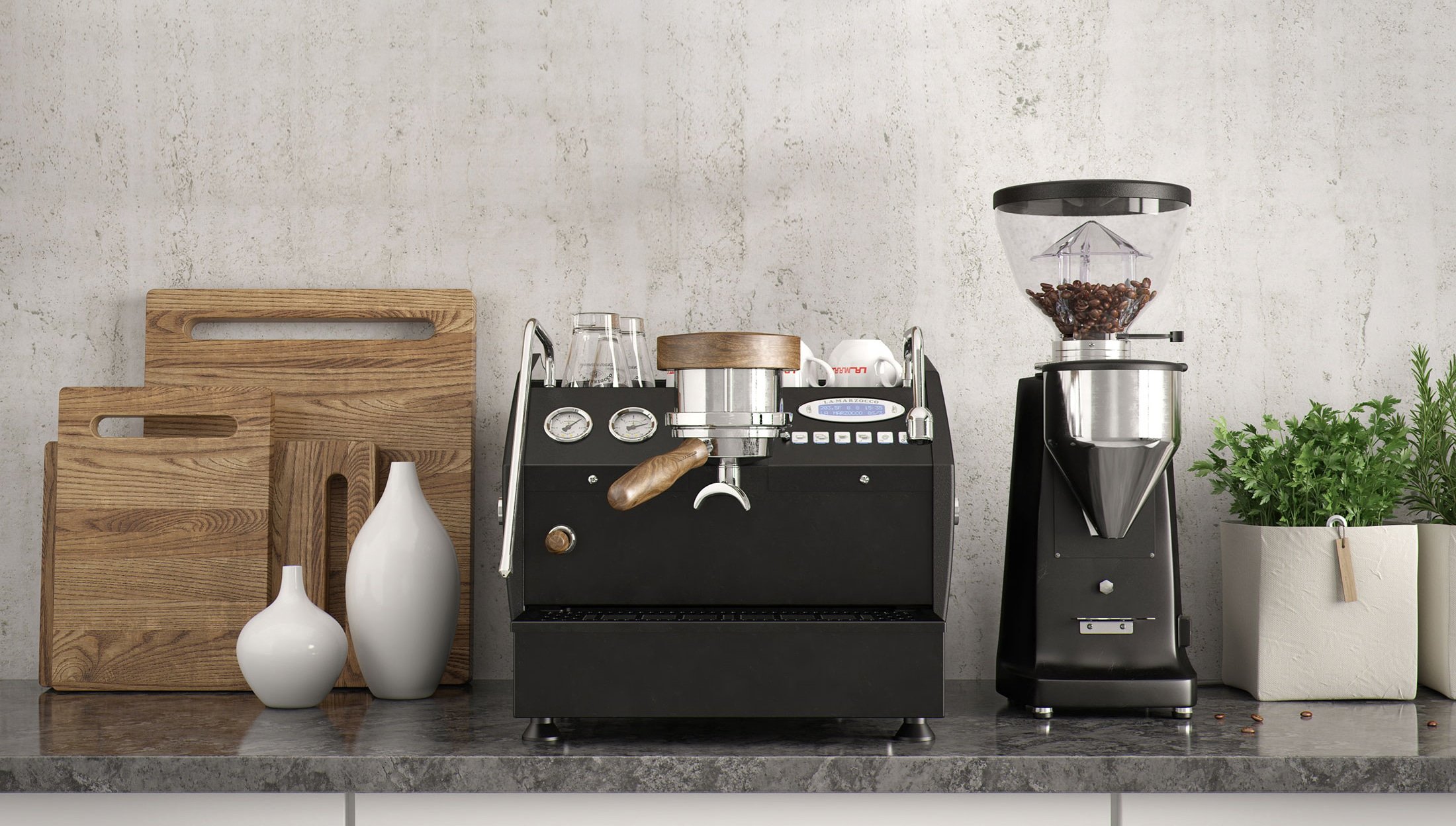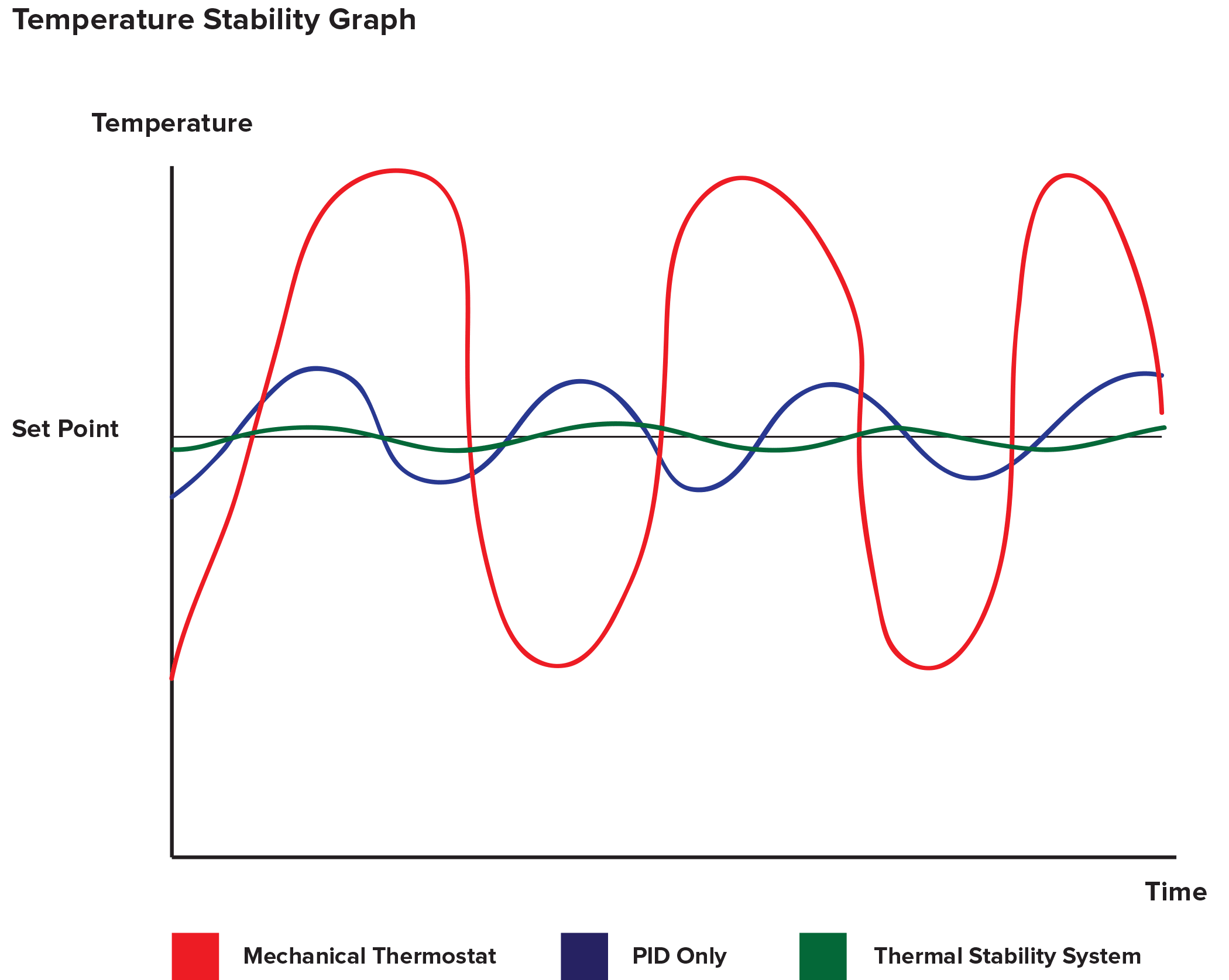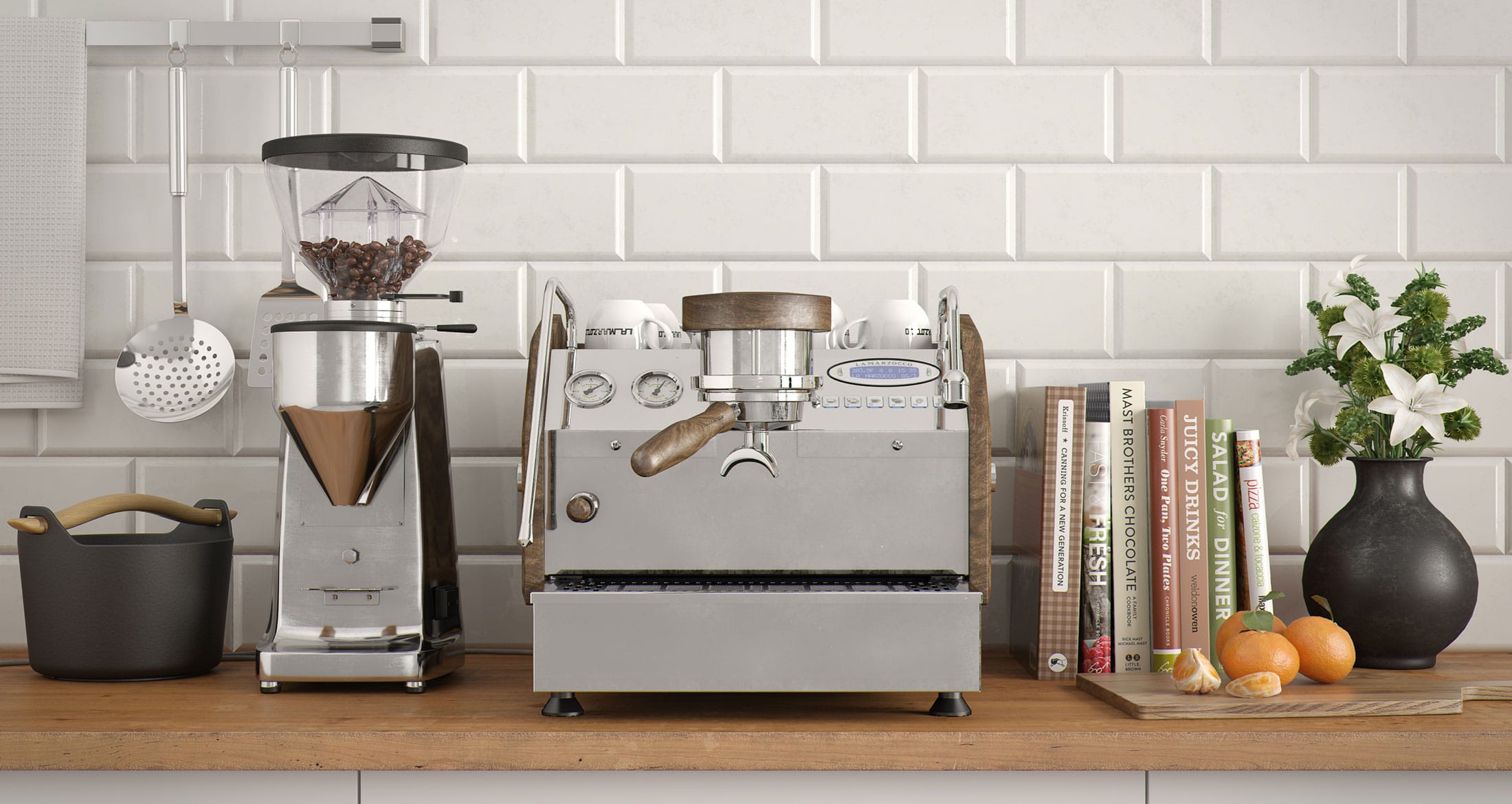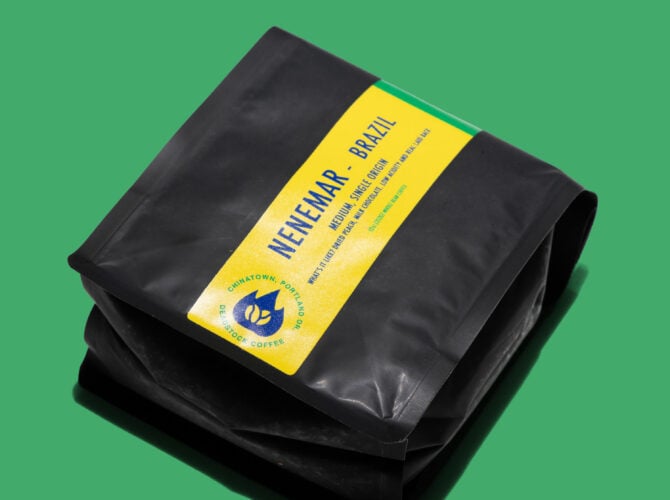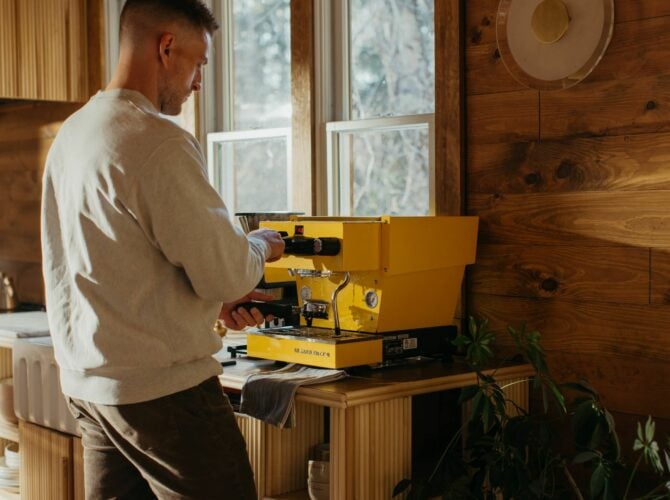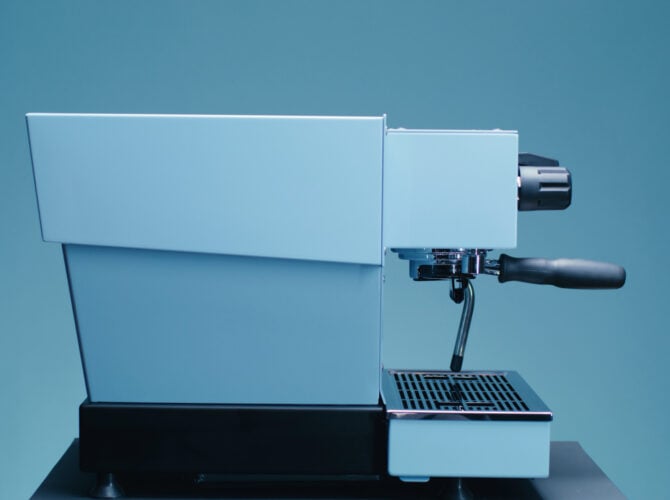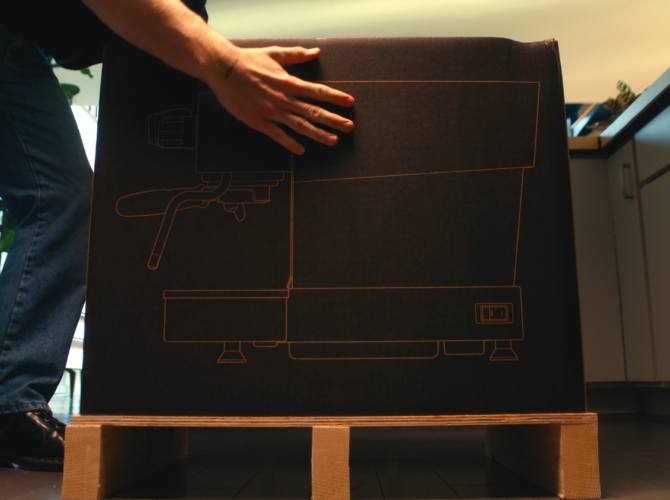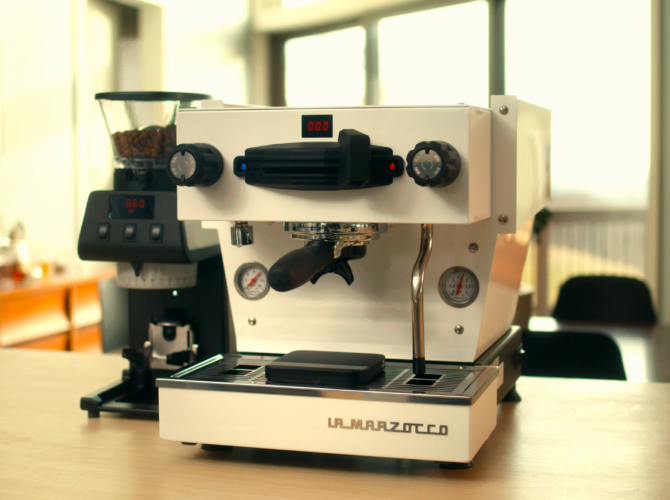Since 2007, the GS3 has been the standard in professional-grade home espresso machines. La Marzocco produces two versions of the GS3—the AV (auto-volumetric) and the MP (manual paddle), and one of the most common questions we get here at La Marzocco Home is “what’s the difference between the AV and MP?”
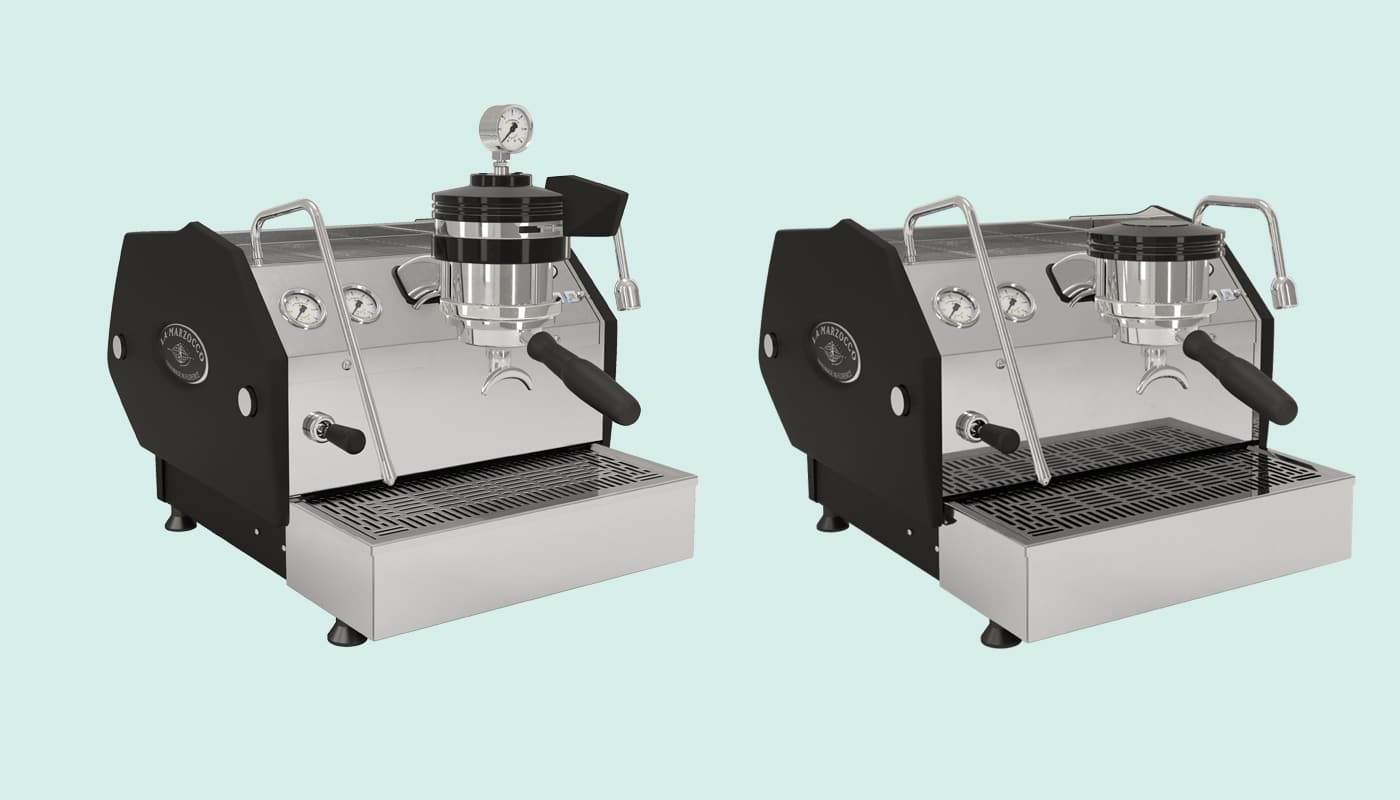
To put it simply, the AV version uses an electronics package that allows for precise & repeatable shots that can be programmed by water volume while the MP gives the user complete manual control over pre-infusion, pressure, and brewing times with paddle valve control. If you think of it like a car, it’s a little bit like the difference between driving a classic manual shift hotrod in the MP, versus a cutting edge supercar with electronic sports shifters in the AV.
Before we unpack what that all means for a barista using the machine on a daily basis, let’s talk a little bit more about the GS3 as a platform. The GS3 was released in 2007 as a full-performance commercial espresso machine fitted into a smaller body that can sit in a home or office, run on 120V electricity, and use its own water reservoir. Pulling from the same technologies as La Marzocco’s commercial machines, the GS3 is designed to provide a full array of tools for even the most demanding barista—including rock-solid PID-controlled temperature, dual boilers, and access to the MP and AV architectures found in the Strada and Linea lines.
That all sounds good, but what does it actually mean? In short, the GS3 was made to be the ultimate home espresso machine, freeing up a barista to explore espresso in any and every way, without worrying about whether the machine could keep up or if it would hold them back. No compromise on quality, and complete focus on the coffee.
The GS3 AV
At its most basic, the GS3 AV is a programmable espresso machine. Think consistency. It uses an electronically controlled espresso system, utilizing the same electronics package as the La Marzocco GB5 AV to actuate the pump and the grouphead’s solenoid valve to create the appropriate pressure to extract coffee. This electronic control is what actually enables the volumetric functions of the GS3. Attached to the cold-water side of the boiler is a small, wheel (called a flowmeter) that spins when water passes through. The AV is able to count and measure the precise amount of water that passes through the grouphead, and can be programmed by a user to dispense that same amount of water each time.
After dialing in a coffee, this makes it possible to extract shots using the same volume of water every time, simply by pressing a button. As we talked about in our “Dialing In” post, shot volume (espresso yield) is a key variable when brewing espresso, and being able to program it is incredibly valuable and allows the barista to focus on other variables such as grind size.
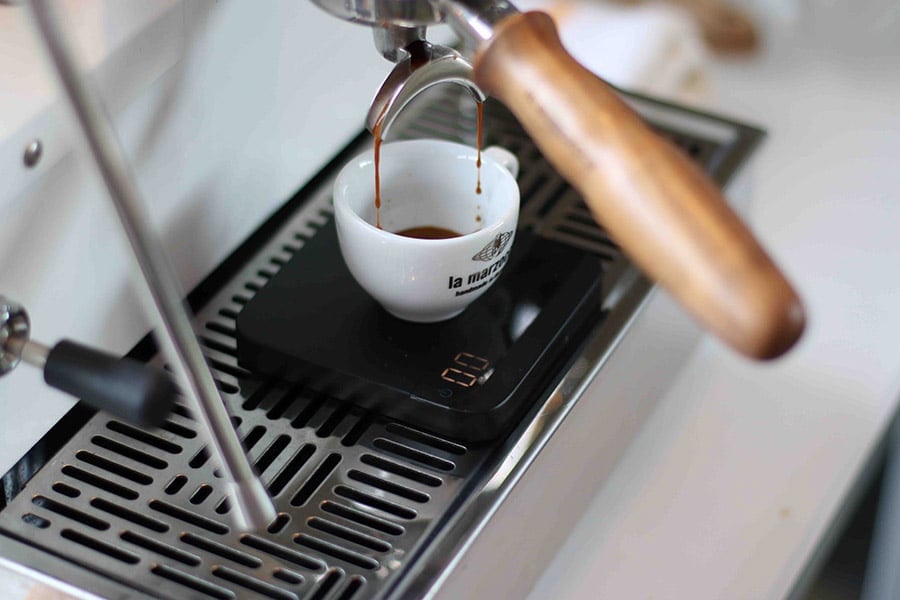
As you can imagine, the implication of programming shots isn’t only useful to a barista at home, but can be incredibly valuable in high-volume situations. Auto-volumetrics on machines is something that we’ve seen become more and more of a focus in high-volume, busy specialty coffee shops across the world. The four programmable buttons on the GS3 AV are perfect for anything from brewing individual shots at home to serving in high-volume situations like catering events.
The AV also has a few more bits of functionality thanks to the electronics. First, the ability to program pre-infusion times into each button. Say you’d like to program pre-infusion into your shot, the AV allows you to tell the machine, for example, to pre-infuse for 4 seconds, rest for 5 seconds, then begin brewing. Whether plumbed-in or using the reservoir, pre-infusion is accomplished by quickly engaging the pump for 1-5 seconds (adjustable for each AV preset), then disengaging for 1-5 seconds, then engaging the pump for brewing, which is able to replicate a smooth pre-infusion pressure curve.
One final feature of the AV is an automated cleaning cycle. This allows a barista to simply place a blind portafilter basket with detergent in the machine and press a couple buttons—the electronics handle the entire backflush cycle from there.
The GS3 MP
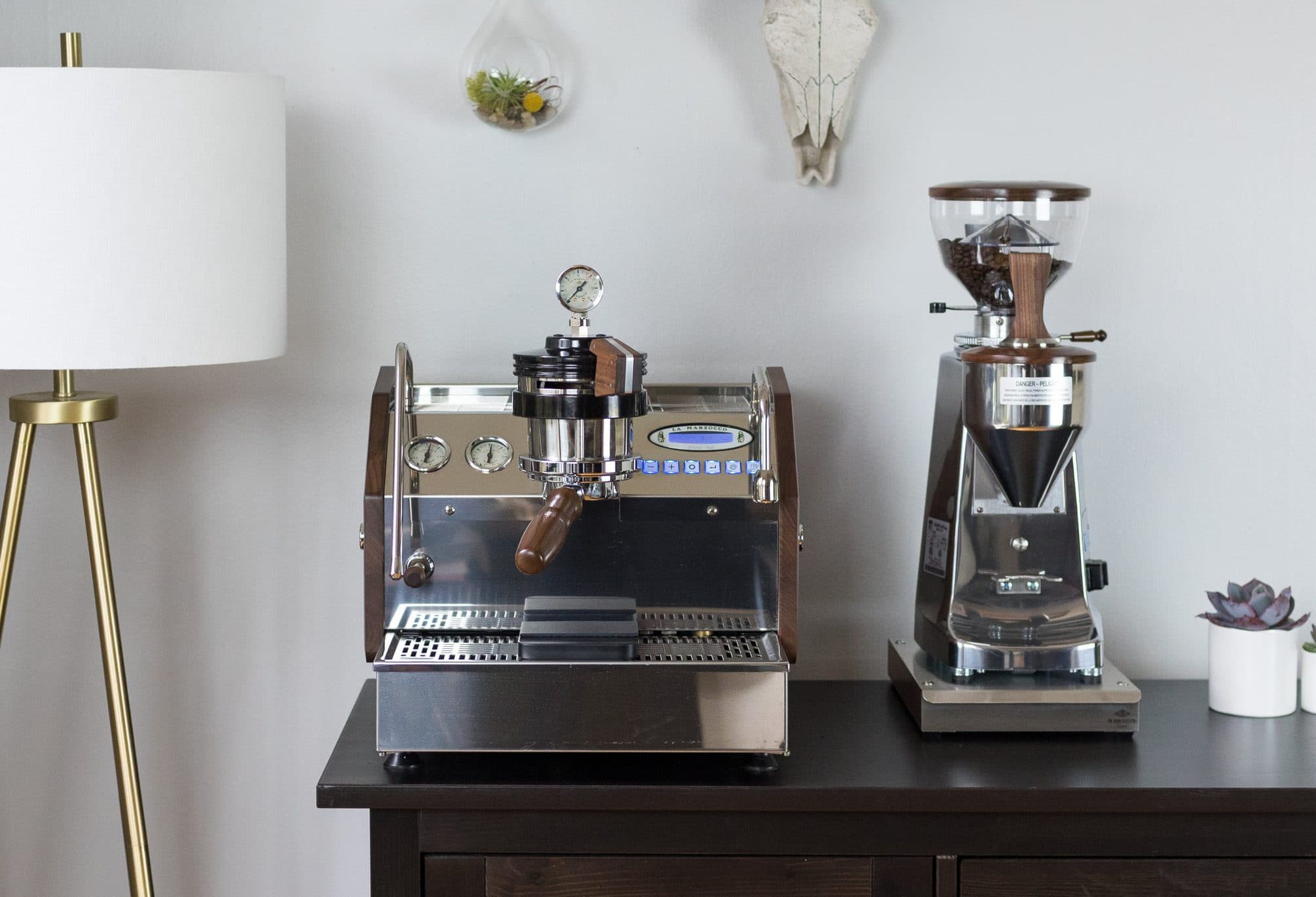
The GS3 MP by contrast is a much more manual machine, designed to capture the romance of classic espresso production. The MP grouphead—now in its fifth version—comes standard with a new conical valve and a grouphead manometer that allows for full-range pressure manipulation with a reservoir or plumbed-in GS3 off of a 110v power supply. As the paddle is moved to the left the microswitch is activated, engaging the pump. As the conical valve opens, more water is allowed to pass through.
The MP valve was completely redesigned in 2016 to improve the reliability and longevity of the MP. With this new conical valve, we don’t expect any rebuild to be necessary for up to two years—and in the case of a home user, potentially even longer.
We’ve shifted the microswitch for engaging the pump closer to the beginning of the brew cycle in order to create back pressure on the valve. Now, you can manually manipulate brew pressure using the built-in reservoir on the machine. No more need to plumb in the GS3 MP for pre-infusion, it’s all ready to go. This also allows for a wider range of pressure manipulation due to an expanded variability range.
Accompanying the new conical valve, the MP comes with a periscope manometer, which measures brew pressure at the point of brewing instead of only in the boiler. This, combined with the Pump On Full Range Pressure Manipulation feature allows for manual pressure profiling while still using the built-in reservoir.
Example of Full Range Pressure Manipulation with the GS3 MP

In essence, the paddle places the responsibility for starting and stopping the pre-infusion, pressure, and brewing stages of the espresso shot solely in the hands of the barista. The MP leads to some exciting possibilities with espresso brewing—full control over your pressure on the fly means more possibilities and even more styles of espresso, regardless of what coffee you’re using.
Final Thoughts
As our knowledge about espresso continues to grow, and the ability to tinker with more variables becomes more common, the decision between the AV and an MP rests not in which machine produces a better shot of espresso, but rather in the preferences of the barista. If you find value in programming shot volumes and pre-infusion times, you may find yourself leaning toward an AV. If you like having complete control on-the fly, you may find yourself leaning toward an MP. To bring us back to our original metaphor, the precision-tuned electronics package on the GS3 AV is able to compensate for “driver errors” and give the same handling and performance during any driving condition, while the GS3 MP is designed for maximum flexibility, giving dedicated drivers the tools necessary to finesse the smoothest possible power curves as they rocket down the espresso roadway.
☕️
Design and customize your favorite version of the GS3—choose from wood or glass side panels, custom wood accents, and multiple body panel colors. Be sure to share your finished design with us @lamarzoccohome.
